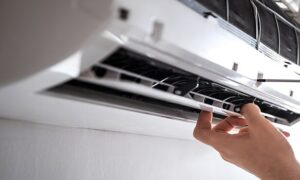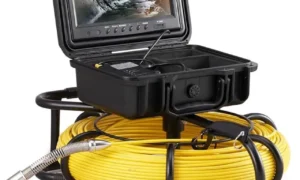Energy bills take up a significant portion of household expenses. Rising costs make it essential for people to find effective ways to save money. Fortunately, you can lower energy bills without sacrificing comfort. By making simple adjustments and using energy-efficient solutions, you can reduce consumption and create a more sustainable home.
Understand How You Use Energy
You need to know where your energy goes to start saving. Heating and cooling systems consume the most energy in most homes. Appliances like refrigerators, washing machines, and dishwashers follow closely. Electronics and lighting also contribute significantly to your energy usage.
Review your energy bills to identify peak usage periods. Many utility companies offer apps or tools that track your energy consumption. These tools help you pinpoint the systems and devices using the most energy. Once you know, you can take steps to cut unnecessary use.
Upgrade to Energy-Efficient Appliances
Outdated appliances consume more electricity than necessary. Replacing old models with energy-efficient ones lowers energy use and reduces bills. Energy Star-rated refrigerators, washing machines, and dishwashers use significantly less power and water.
When you upgrade to modern appliances, you cut costs immediately. For example, a new refrigerator consumes less electricity and saves you money every month. Efficient washing machines also work well with cold water, reducing energy use even further. Although you spend more upfront, these appliances pay for themselves in long-term savings.
Make Heating and Cooling Systems Work Smarter
Heating and cooling systems drive up energy bills, but you can improve their efficiency. Insulate your home to keep warm air inside during winter and cool air inside during summer. Seal gaps around doors and windows to stop drafts.
Install a programmable thermostat to control temperatures automatically. Lower the heat or air conditioning when you’re out, and set it to return to a comfortable level just before you come back. Perform regular maintenance, like replacing air filters, to ensure your HVAC system runs efficiently. These steps reduce strain on your system and save energy.
Switch to Solar Energy
Solar panels offer a powerful way to cut energy costs. By generating your own electricity, you reduce reliance on the grid. Perth, with its sunny climate, provides ideal conditions for solar panels.
Installing solar panels may seem expensive, but government rebates and incentives help reduce the cost. Over time, the savings from lower electricity bills outweigh the initial investment. Most solar panels last 25 to 30 years, giving you long-term benefits and reducing your carbon footprint.
Improve Lighting Efficiency
Switching to energy-efficient lighting offers an easy way to cut costs. Replace incandescent bulbs with LED lights. LEDs consume up to 75% less energy and last much longer.
Maximize natural light during the day. Open curtains and blinds to brighten your home without relying on artificial lighting. For outdoor lighting, use motion-sensor or solar-powered lights. These options only use energy when necessary, helping you save even more.
Unplug Devices to Stop Phantom Power
Many devices use electricity even when turned off. This “phantom power” wastes energy and adds to your bills. Unplug chargers, gaming consoles, and other electronics when not in use.
Use power strips to make unplugging multiple devices easier. Smart plugs provide another option, cutting power automatically when devices aren’t in use. These simple steps eliminate unnecessary energy use and lower your bills over time.
Reduce Hot Water Usage
Hot water heating consumes a lot of energy. You can save by using less hot water and making a few upgrades. Install low-flow showerheads and faucets to reduce water usage. Wash your clothes in cold water to cut energy consumption even further.
Fix leaks immediately to stop wasting water and energy. A dripping faucet might seem minor, but it can waste gallons over time. By addressing leaks and using water-efficient fixtures, you reduce energy bills significantly.
Seal Doors and Windows
Drafts around doors and windows force your heating and cooling systems to work harder. Seal these gaps to prevent energy loss. Use weatherstripping for doors and caulking for window frames.
Double-pane windows provide better insulation and reduce heat transfer, though they require more investment. Use draft stoppers at the bottom of doors to block airflow. These measures keep your home comfortable and lower your bills.
Use Ceiling Fans Wisely
Ceiling fans offer a cost-effective way to improve indoor comfort. During summer, set fans to rotate counterclockwise to create a cooling breeze. In winter, reverse the direction to push warm air down from the ceiling.
Using ceiling fans lets you adjust your thermostat to a more energy-efficient setting. Fans consume less power than air conditioners or heaters, making them a valuable addition to your energy-saving efforts.
Make Some Small Lifestyle Changes
Small changes in your daily habits can lead to big savings. Turn off lights when you leave a room. Run dishwashers and washing machines only when full. Dry clothes on a line instead of using a dryer whenever possible.
Encourage your family to follow these habits too. Even kids can help by turning off lights or unplugging devices. These small actions add up, reducing energy consumption over time.
Use Smart Technology
Smart home technology makes it easier to save energy. Install a smart thermostat to control heating and cooling more effectively. These devices adjust temperatures automatically based on your schedule.
Use energy-monitoring apps to track your electricity use. Smart plugs let you control devices remotely and turn them off when not needed. These technologies optimize energy use, helping you save money without much effort.



































